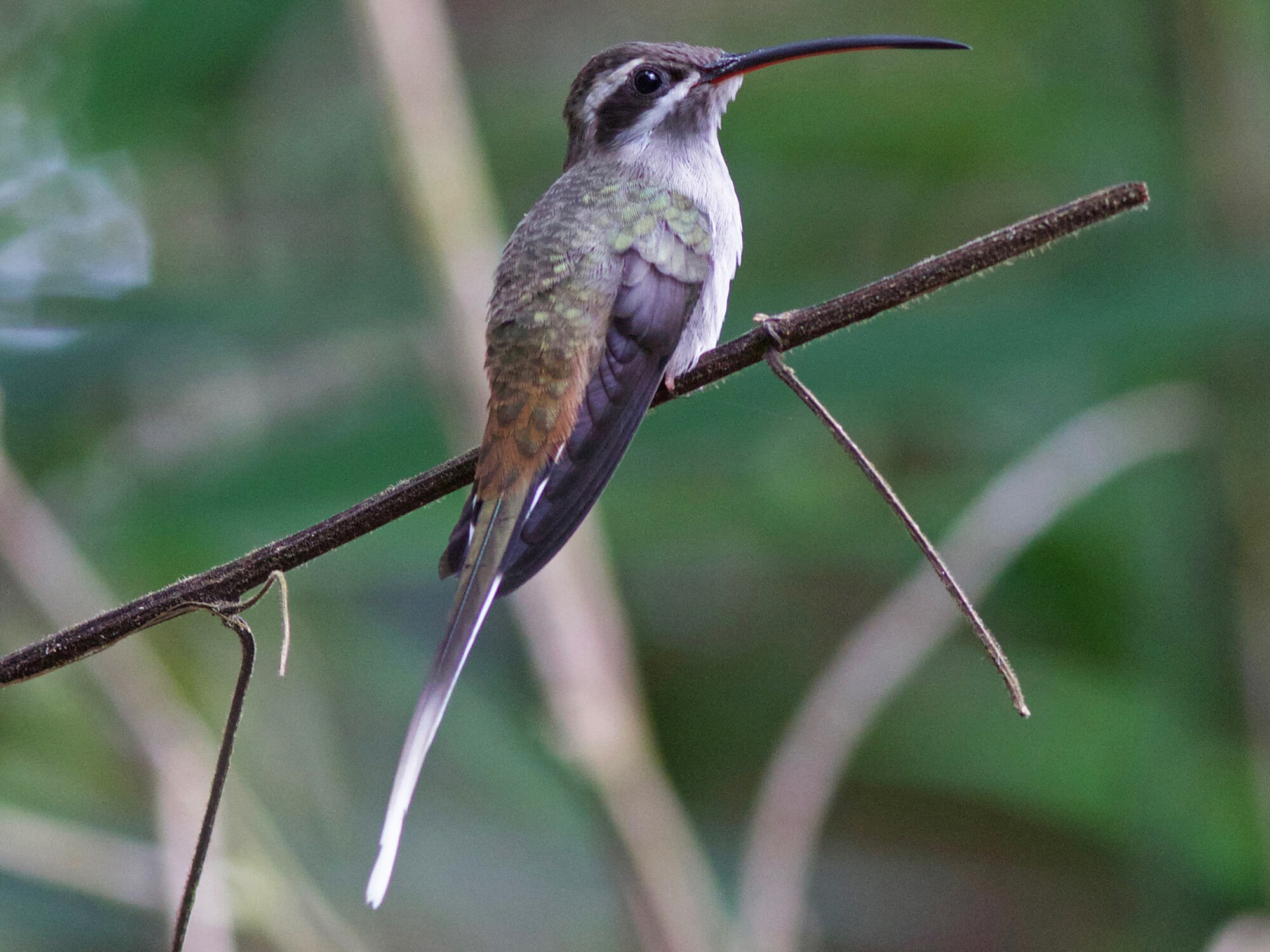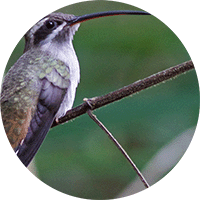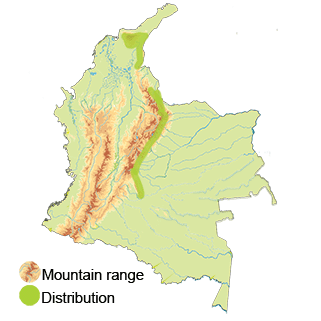Sooty-capped Hermit
The Sooty-capped Hermit (Phaethornis augusti) Read in Spanish
Appearance: The Sooty-capped Hermit is a medium-sized hummingbird with a distinctive appearance. It has dark, sooty-colored cap on its head, which contrasts with its green upperparts and throat. These birds also have white streaks on their face and underparts, and their long, slightly curved bill is used for feeding on nectar. The wings and tail of the Sooty-capped Hermit are dark brown or black, often showing iridescence.
Habitat: Sooty-capped Hermits inhabit humid montane forests in the Andean region preferring areas with dense vegetation and abundant flowering plants. They are often found in the mid to upper levels of the forest canopy, where they can access nectar from flowers. These birds may also occur in forest edges, secondary growth, and shaded coffee plantations.
Behavior: Sooty-capped Hermits feed on nectar from a variety of flowers, using their specialized bill to extract the nectar. They are known for their agile flight patterns, including hovering in front of flowers while feeding. These hummingbirds may also consume small insects and spiders for protein.
Breeding: The breeding behavior of the Sooty-capped Hermit includes courtship displays by the males to attract females. Nests are cup-shaped and are made of plant fibers, lichens, and spider silk, placed on tree branches. Female Sooty-capped Hermits incubate the eggs and care for the young, with both parents being involved in feeding the chicks.
Conservation Status: The Sooty-capped Hermit is categorized as Least Concern (LC) by the International Union for Conservation of Nature (IUCN).
Distribution
The Sooty-capped Hermit (Phaethornis augusti)
Eastern Andes: The Eastern Andes region of Colombia, known for its diverse birdlife, provides suitable habitat for the Sooty-capped Hermit. This species can be found in montane and cloud forests, as well as forest edges and clearings at mid to high elevations within the Eastern Andes.
4. Other Forested Regions: The Sooty-capped Hermit may also be found in other forested areas across Colombia, such as in the Santa Marta Mountains.
Taxonomy
The Sooty-capped Hermit ( Phaethornis augusti)
- Kingdom: Animalia
- Phylum: Chordata
- Class: Aves (Birds)
- Order: Caprimulgiformes
- Family: Trochilidae
- Genus: Phaethornis
- Species: Phaethornis augusti
Vocalization
The Sooty-capped Hermit (Phaethornis augusti)
- Songs: The song of the Sooty-capped Hermit is typically described as a series of high-pitched, rapid, and somewhat buzzy or trilling notes. The song may vary in length and complexity but is generally delivered in a repetitive and consistent pattern. Male Sooty-capped Hermits often use their songs to establish territories, attract mates, and communicate with other individuals.
- Calls: In addition to their songs, Sooty-capped Hermit also have various calls that serve different purposes:
Contact Calls: Short, simple calls used for communication and maintaining contact with other individuals, especially in dense vegetation.
Alarm Calls: Sharp, distinct calls used to warn of potential threats or disturbances in the surroundings.
Courtship Calls: Specialized calls used during courtship displays or interactions between males and females. - Vocalization Frequency: The vocalizations of the Sooty-capped Hermit can vary in frequency, volume, and intensity based on the context. During territorial disputes or interactions with other individuals, the frequency and intensity of vocalizations may increase.
- Role in Communication: The vocalizations of the Sooty-capped Hermit are integral to social interactions, mate attraction, territorial defense, and overall communication within their habitat. These vocal signals help establish and maintain social hierarchies, minimize conflicts, and improve reproductive success in the species.





